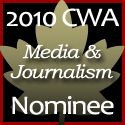The above is Part VI of Mel Hurtig's documentary on YouTube; Who Killed Canada.
In part one he gives an introduction to the infrastructure of the extreme right-wing movement; beginning with the hi-jacking of our media, to the many so-called think-tanks, that provide the 'facts' to that hi-jacked media.
In part two he discusses the reduction in federal revenue that weakened spending in important areas. We learned that we are 25th of the 30 OECD countries, in terms of spending on social programs.
Part three deals with our increasing poverty, that coincides with the increase in corporate profits. And though these 'free market' gurus try to convince us that we should throw in our lot with corporate Canada, they have done nothing to advance Canadian interests or protect this country's citizens.
Part four discussed the fact that although neo-cons would like us to believe that we are overtaxed, Canada is actually 21st of 30 nations in terms of the amount of taxes we pay. It also discusses the fact that our history has been rewritten to erase the important role the First Nations played.
Part five dealt with NAFTA and what a horrible thing this was and is for Canada. We are basically under the control of the United States. We got very little from the deal, and in fact 11,043 Canadian companies have now become foreign controlled.
In part six Mr. Hurtig continues to discuss the effects of NAFTA on Canada and the fact that we have the most foreign owned corporations of any other developed nation. He also mentions the SPP and the fact that the media has not discussed what this deep integration policy means for us.
Following is a brief history of foreign ownership in Canada. Even some Canadian companies are now concerned that we are losing control of our resources and the fact that foreign companies are moving their head offices out of the country, taking jobs away, while contributing little to the betterment of Canada.
Foreign ownership is the result of investment by non-resident corporations in another country's companies in the pursuit of profit through control. It is incidental to the operations of transnational, multinational, or global corporations in setting up subsidiaries or branch plants. The recipient, or host, country can get the economic benefit of superior technology and management but at the possible political costs of dependency and susceptibility to foreign practice and policy.
For much of its history Canada has had, for good or bad, the highest level of foreign ownership of any country in the world—particularly high for a developed and industrialized country. This can be attributed in part to proximity to the United States, where multinational corporations are disproportionately headquartered, and to American demand for Canada's rich supply of exploitable natural resources. But it is also the consequence of conscious Canadian government policy to encourage foreign investment.
The high protective tariff of the National Policy of 1879 helped infant Canadian firms, but it also attracted American branch plants that were already spreading nationally throughout the United States and simply spilled over its northern border. Canadian politicians boasted to their constituents about the jobs created when branch plants came to their communities. The great prosperity associated with the economic boom prior to the First World War masked the higher costs of branch plants, which lost economies of scale by producing a full range of American goods for the smaller Canadian market. Whether this inefficiency was the result of the tariff or of foreign ownership was hard to sort out since the two were so bound together.
In the first decade after the Second World War, there was another great round of American investment in Canadian resources for American consumption. For the first time, a backlash manifested itself against the extent of foreign ownership. Walter Gordon , a prominent Canadian businessman and Liberal party guru, headed the Royal Commission on Canada's Economic Prospects, which, while admitting of the benefits, warned of the costs of foreign ownership in terms of economic and political sovereignty.
The stage was set for a sustained debate on how to devise policies that would increase the amount of Canadian ownership and at the same time would increase the benefits and decrease the costs of foreign ownership. As minister of finance in the Pearson government in the mid-sixties, Gordon proposed a tax on foreign takeovers, but it generated so much controversy it had to be abandoned. The best chance to deal meaningfully with foreign ownership was lost but the issue did not go away. In 1968 a task force appointed by the Pearson government and overseen by Gordon produced a comprehensive report on foreign ownership called the Watkins Report after its chief author, economics professor Melville Watkins . It endorsed a long-standing proposal of Gordon to create the Canada Development Corporation as an instrument to increase Canadian ownership, and proposed setting up an agency to monitor the activities of foreign-owned companies to increase benefits and decrease costs.
The Trudeau government commissioned another report under the direction of cabinet minister Herb Gray ; his comprehensive Gray Report ( 1972 ) laid the basis for action, particularly when the Liberals found themselves in a minority government situation in 1972 and needed the support of the nationalist NDP in order to govern. The Canada Development Corporation had been created in 1971 and the Foreign Investment Review Agency was set up in 1973 , though with far fewer powers than the Gray Report had recommended. In 1974 Petro-Canada was established as a Crown corporation to facilitate the Canadianization of the oil and gas industry. Foreign ownership fell relative to Canadian ownership in the 1970s and into the 1980s. This seems, however, to have had less to do with the foreign ownership policies of government—FIRA turned out to be quite toothless—than with the increasing maturity of Canadian business.
The election of the Reagan administration in the United States and then of the Mulroney government in Canada in the 1980s precipitated a sharp about-face on foreign ownership policy. The Canada Development Corporation and Petro-Can were privatized and FIRA was given the mandate of promoting and encouraging foreign investment. Out of the long debate on foreign ownership, little of substance remained, though rules limiting foreign ownership in the media have survived.
The free trade agreements struck in the 1990s contained ‘national treatment’ provisions that require all firms, regardless of nationality of ownership, to be treated the same, thereby ruling out policies directed at foreign-owned firms. The Multilateral Agreement on Investment that would have enshrined globally the rights of multinational corporations failed in its implementation in the late 1990s because of global opposition organized, in part, by the Council of Canadians.
Ironically, in the early years of the 21st century, the Canadian business community, which had mostly opposed any restrictions on foreign ownership, has expressed some concern about the tendency of American companies, in the era of free trade, to rationalize on a North American basis by closing the Canadian head-office of the subsidiary, thereby limiting decision making in Canada and eliminating some jobs. With tariffs gone, it would now seem that there may be some problems that inhere in foreign ownership itself.
More Postings on NAFTA and teh Selling of Canada:
1. NAFTA and the Selling of Canada. We Got a Raw Deal
2. Why we Must Continue to Fight For Our Sovereignty
3. Protecting Our Sovereignty and Rewriting our History
4. Good News and Bad News on the SPP
5. Harper's Free Trade is Managed Trade and All Wrong For Canada



No comments:
Post a Comment